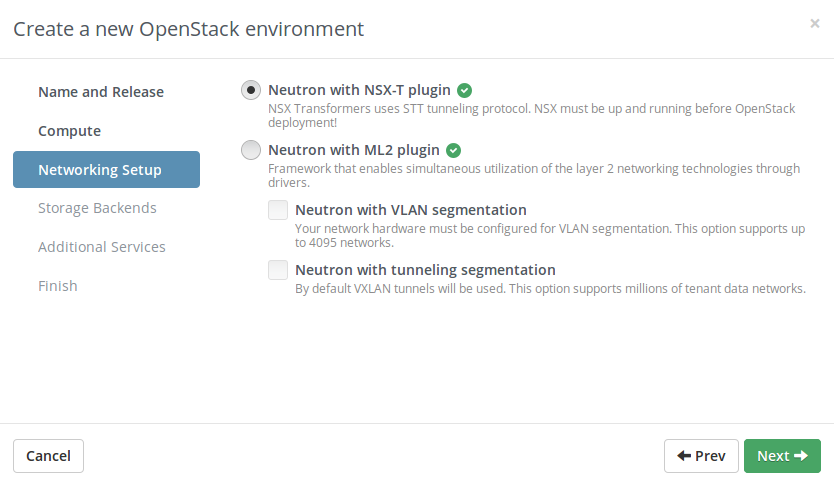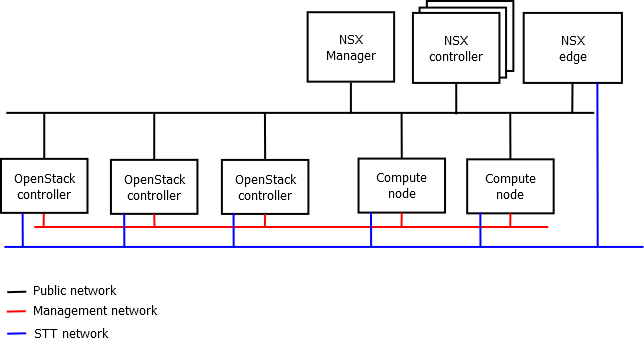2.2 KiB
OpenStack environment notes
Environment configuration
The Fuel NSX-T plugin cannot deploy NSX Transformers.
Before you start OpenStack deployment, verify that your VMware NSX Transformers is configured and functions properly:
- VLAN transport zone must present
- Overlay transport zone must present
- tier0 router must be created
- uplink profile for OpenStack nodes must be created
- NSX edge cluster must be formed
- IP address pool for OpenStack controllers and compute nodes must exist
To use the NSX-T plugin, create a new OpenStack environment using the Fuel web UI by doing the following:
On the
Networking setupconfiguration step, selectNeutron with NSX-T pluginradio button
Network setup
Pay attention to on which interface you assign the Public network. The OpenStack controllers must have connectivity with the NSX Manager host through the Public network since the Public network is the default route for packets.
If NSX Manager and NSX Controllers are going to communicate with
OpenStack controllers and computes through Public network then setting
Assign
public network to all nodes (Networks tab -> Settings/Other
label) must be enabled. Otherwise compute node will be communicating
with NSX Manager through controller that perform NAT which will hide
compute node IP addresses and will prevent them to register in NSX
management plane.
Another way is to locate NSX nodes in OpenStack management network. In this setup there is no need to assign public network to all nodes, because OpenStack and NSX nodes has L2 connectivity and no NAT is performed. OpenStack controllers and computes will still use Public network as default route.
During the deployment, the plugin creates a simple network topology for the admin tenant. The plugin creates a provider network which connects the tenants with the transport (physical) network: one internal network and a router that is connected to both networks.

